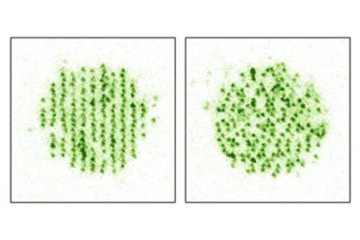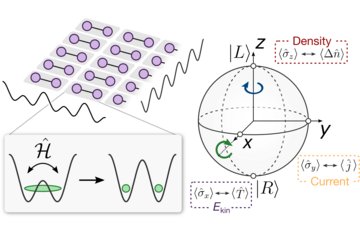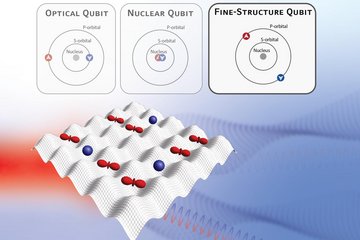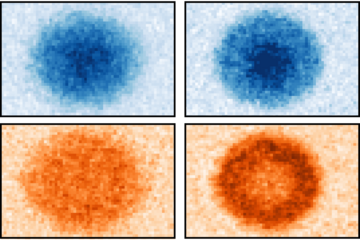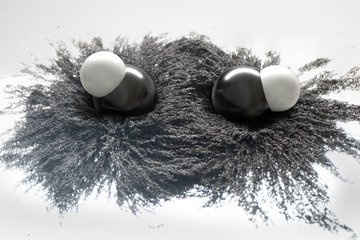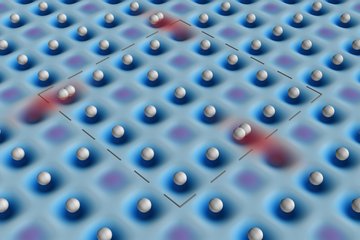Magnetically mediated hole pairing in fermionic ladders of ultracold atoms
Nature volume 613, pages 463–467 (2023)

Conventional superconductivity emerges from pairing of charge carriers – electrons or holes – mediated by phonons. In many unconventional superconductors, the pairing mechanism is conjectured to be mediated by magnetic correlations, as captured by models of mobile charges in doped antiferromagnets. However, a precise understanding of the underlying mechanism in real materials is still lacking and has been driving experimental and theoretical research for the past 40 years. Early theoretical studies predicted magnetic-mediated pairing of dopants in ladder systems, where idealised theoretical toy models elucidated how pairing can emerge despite repulsive interactions. Here we experimentally observe this long-standing theoretical prediction, reporting hole pairing due to magnetic correlations in a quantum gas of ultracold atoms. By engineering doped antiferromagnetic ladders with mixed-dimensional couplings, we suppress Pauli blocking of holes at short length scales. This results in a drastic increase in binding energy and decrease in pair size, enabling us to observe pairs of holes predominantly occupying the same rung of the ladder. We find a hole-hole binding energy on the order of the superexchange energy, and, upon increased doping, we observe spatial structures in the pair distribution, indicating repulsion between bound hole pairs. By engineering a configuration in which binding is strongly enhanced, we delineate a strategy to increase the critical temperature for superconductivity.
To learn more about our recent publication please visit Nature.



